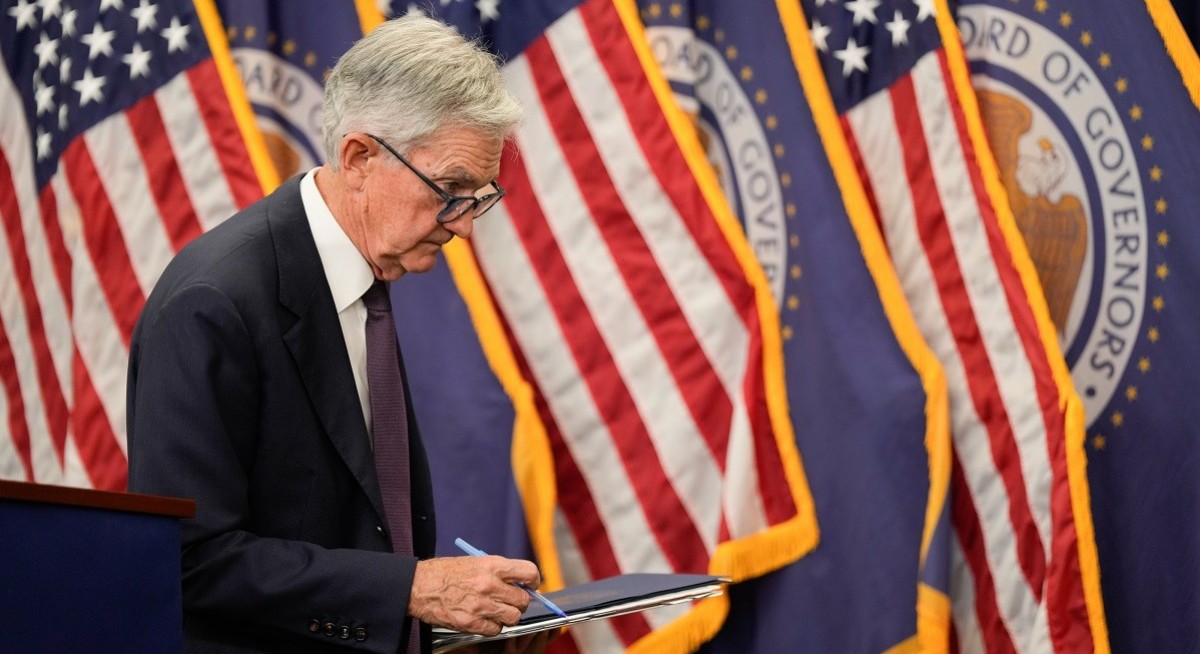“Labour demand has softened, and the recent pace of job creation appears to be running below the break-even rate needed to hold the unemployment rate constant,” Powell told reporters. He added, “I can no longer say” the labour market is “very solid.”
The decision comes at an extraordinary moment for the Fed. President Donald Trump, who has demanded drastic rate reductions and sought to exert more control over the US central bank, continued his legal battle this week to remove one official from the Fed board and install his own top economic adviser ahead of the highly anticipated gathering.
Fed Governor Lisa Cook and newly-sworn-in Governor Stephen Miran, who is on a temporary leave from his role as chair of the White House Council of Economic Advisers, both attended the meeting.
The Federal Open Market Committee voted 11-1 on Wednesday to cut the target range for the federal funds rate to 4%-4.25%, after holding rates steady for five straight meetings this year.
See also: JPMorgan flips forecast, sees Fed cutting rates in December
Miran, who preferred a larger, half-point cut, was the only official voting against the decision. That was a notable victory for Powell, given that economists were expecting as many as four dissents.
Governors Christopher Waller and Michelle Bowman, who voted for a cut in July when the committee left rates unchanged, stood with the majority this time.
“The committee is showing solidarity in making a tough decision together,” said David Bianco, DWS Group’s chief investment officer for the Americas. He added, however, “while you see the rest of the FOMC linking arms, there is an antagonist in the room.”
See also: Fed’s Williams says he sees room for rate cut in ‘near term’
Meeting-by-Meeting
Powell also signalled ongoing concern over inflation pressures resulting from tariffs. “Our obligation is to ensure that a one-time increase in the price level does not become an ongoing inflation problem,” he said.
Looking ahead at the outlook for additional rate moves, Powell was cautious, saying the Fed was now in a “meeting-by-meeting situation.”
“This doesn’t feel like the beginning of an aggressive easing campaign, the kind that you might see if we were heading into recession,” Stephen Stanley, chief economist at Santander US Capital Markets, said. “The path is going to be very much dependent on how the economy plays out of from here.”
In their post-meeting statement, policymakers acknowledged that inflation has “moved up and remains somewhat elevated,” but also pointed to worries over jobs. Officials said the unemployment rate had “edged up,” and the “downside risks to employment have risen.”
The US dollar erased losses as Powell began speaking and described Wednesday’s decision as “a risk-management cut.” Treasury yields rose, led by the five-year yield up 6 basis points to 3.65%.
The cut was widely expected amid signs the central bank’s concerns are shifting toward employment and away from inflation, following a sharp slowdown in hiring over the last several months.
To stay ahead of Singapore and the region’s corporate and economic trends, click here for Latest Section
Policymakers also updated their economic projections at this meeting and now see two additional quarter-point cuts this year. That’s one more than projected in June. They foresee one quarter-point cut in 2026 and one in 2027.
One Fed official projected the policy rate would drop by another one and a quarter percentage point by December.
The Fed's September Dot Plot
In their economic forecast, policymakers slightly upgraded their median outlook for growth in 2026. They also forecast modestly higher inflation next year.
Jackson Hole
Powell signalled the Fed could lower rates this month in a speech at the central bank’s annual Jackson Hole conference in August. After detailing the conflicting developments on each side of the Fed’s dual mandate, Powell said that “the baseline outlook and the shifting balance of risks may warrant adjusting our policy stance.”
A report released earlier this month showed hiring continued to slow in August, and the unemployment rate rose to 4.3%, the highest in almost four years.
But inflation has also accelerated in the past few months as companies increasingly passed tariffs on to consumers. The Fed’s preferred gauge of prices rose 2.6% in the year through July, and analysts expect the August reading due later this month to show another uptick, according to a Bloomberg survey.
While the impact of import duties has been more muted than many expected, some Fed officials remain concerned the tariffs haven’t fully worked through the economy, and could still generate a persistent impact on inflation, rather than represent a one-off adjustment. That has contributed to the central bank’s cautious approach toward rate cuts this year.




